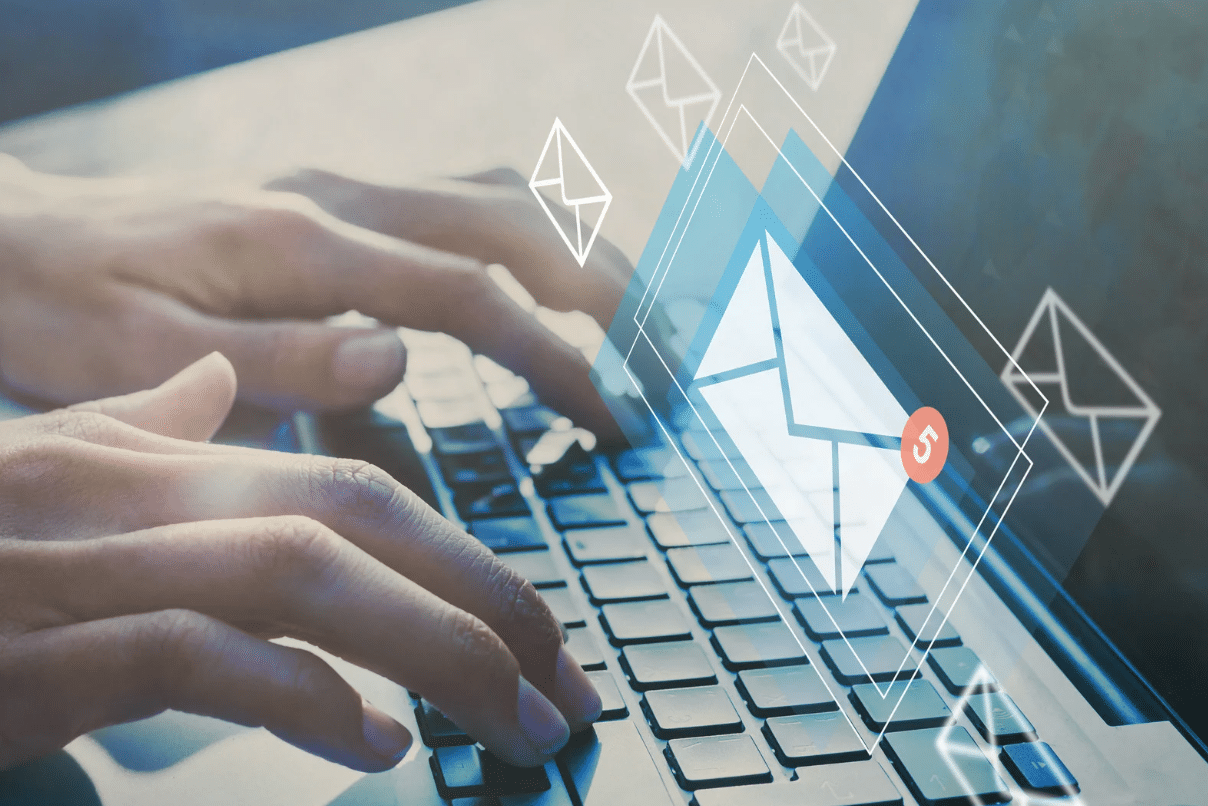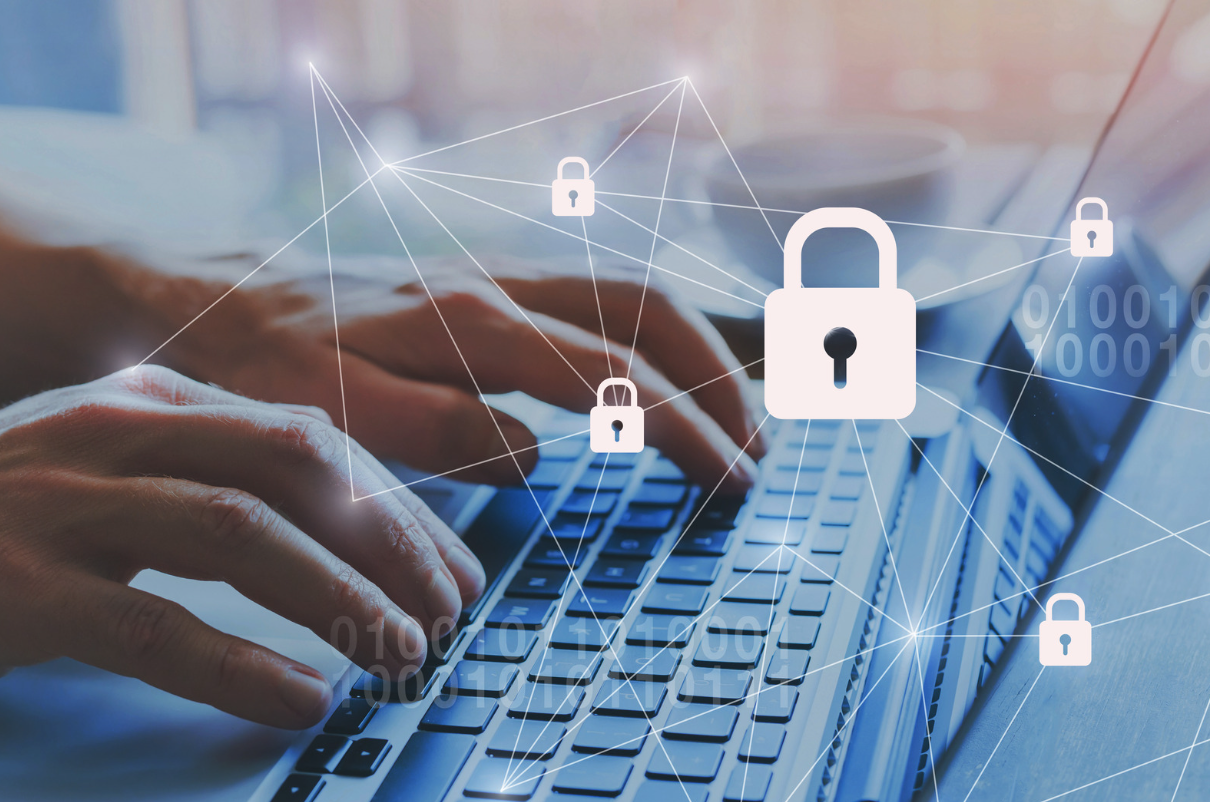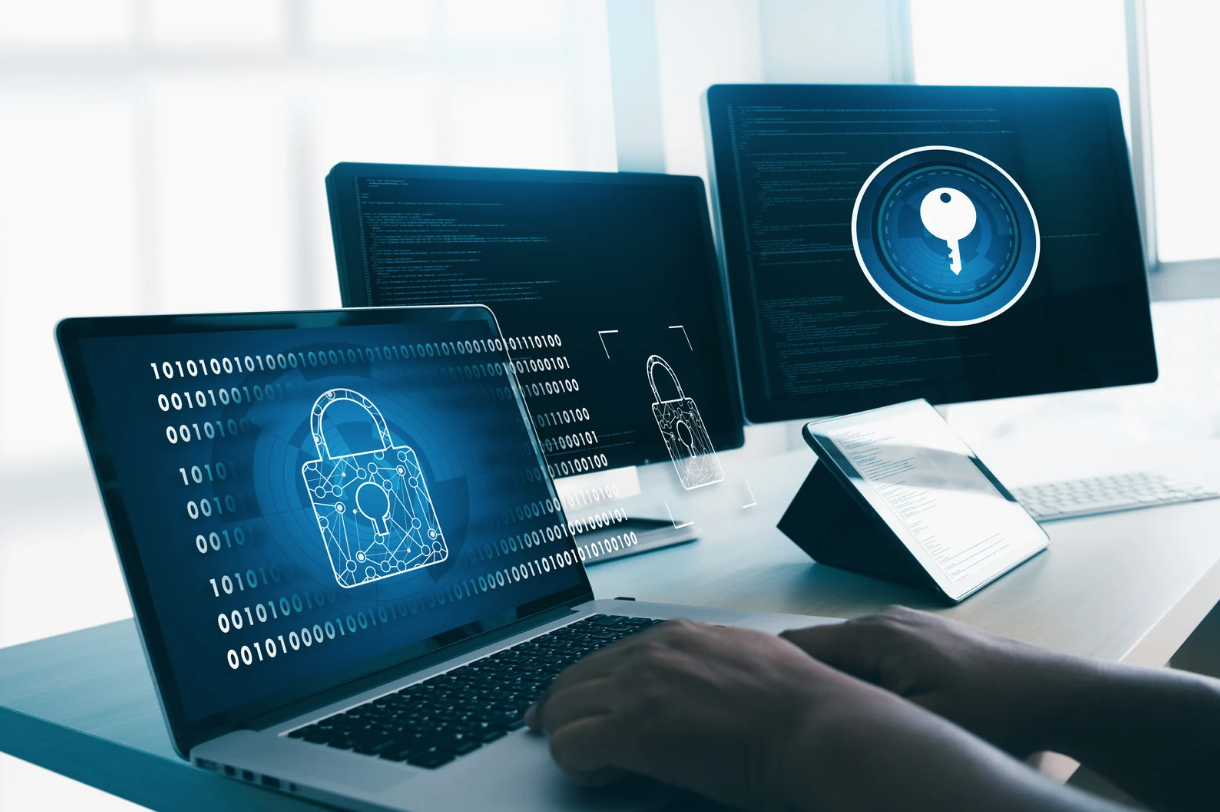These days, businesses can face various challenges when it comes to keeping their data safe and secure. With many employees, it can be hard to train them about the dangers of cyber threats, with many SMEs often feeling overwhelmed at the prospect of data breaches.
‘Phishing emails’ might be a term you’ve encountered, but their implications are vast and often misunderstood. At Your IT Department, our commitment to your IT safety goes beyond offering premier IT services to the UK’s small businesses; we also prioritise educating our customers on how to protect themselves, and this includes being able to understand and identify phishing emails. In this blog, we’ll explore exactly what phishing emails are and give you the essential knowledge to protect your business operations now, and into the future.

So, What is a Phishing Email?
Phishing emails are deceptive electronic messages intended to trick you into taking a specific action, which is typically one that will compromise or give the hacker personal or financial information. These emails often impersonate trustworthy institutions, such as banks, popular online services, or even colleagues, to gain trust and manipulate you into divulging sensitive information.

The Types of Phishing Attacks and Techniques
Let’s take a look at some of the most common types of phishing messages that you or your employees may receive:
Standard Email Phishing
Standard Email Phishing is a common cyber threat where attackers send fraudulent emails designed to resemble correspondence from reputable sources. The objective? To deceive recipients into revealing personal information or credentials. These emails often contain deceptive links or attachments. Verifying any unexpected communications is crucial, especially if they request sensitive information or direct action.
Spear Phishing
Unlike the broad approach of standard phishing, Spear Phishing is a targeted tactic designed to target people specifically. Here, cybercriminals customise their deceitful emails based on specific information about the recipient, making the deception more convincing. This can include referencing a known contact, a recent transaction, or any piece of data that makes the email seem legitimate; it’s always advised to scrutinise any email, even if it appears to come from a trusted contact.
Malware Phishing Attacks
Malware Phishing Attacks have a distinct objective: not necessarily to deceive you into providing information but to trick you into downloading malicious software that can infiltrate your computer system. This is often achieved by disguising the malware as a legitimate file or software update. Once activated, this software can compromise data, monitor user activity, or disrupt system operations. Always exercise caution when downloading attachments or clicking on unfamiliar links.
Vishing (Voice Phishing):
Vishing, short for “voice phishing,” is a cunning technique where cybercriminals use phone calls to deceive individuals into divulging sensitive information. Just like in traditional phishing, vishing attackers impersonate trustworthy entities, such as banks or government agencies. They employ persuasive tactics and often employ caller ID spoofing to make it appear as if they’re calling from a legitimate source. During the call, they might request personal information, PINs, passwords, or even payment details.
To guard against vishing attacks, it’s essential to remain skeptical during unsolicited phone calls, especially if the caller requests sensitive data. Always verify the caller’s identity independently, and refrain from sharing personal information over the phone unless you are absolutely certain of the caller’s authenticity.
SMS Phishing (SMiShing):
In SMS phishing, commonly referred to as SMiShing, attacks, cybercriminals send fraudulent text messages, often posing as legitimate entities like banks, government agencies, or well-known brands.
These SMS messages typically contain urgent requests or alarming warnings, compelling recipients to take immediate action. They may ask you to click on a link, call a specific phone number, or reply with personal information. The ultimate goal of SMiShing, like all phishing attacks, is to extract sensitive data such as login credentials, credit card numbers, or personal identification information.
Clone Phishing
Clone phishing is a deceptive technique where attackers create near-identical copies of legitimate emails or messages, including the sender’s name and logo. They often target individuals who have received the original, legitimate message. The cloned message typically contains malicious links or attachments. Unsuspecting recipients, assuming it’s a genuine follow-up, click on the links or open attachments, unwittingly exposing themselves to cyber threats.
To defend against clone phishing, it’s crucial to scrutinise emails carefully, even if they seem familiar. Look for subtle differences in the email address, sender’s name, or content. If in doubt, contact the supposed sender through official channels to verify the message’s authenticity.
Evil Twin Attacks
Evil twin attacks primarily occur in wireless network environments. In this scenario, cybercriminals create a rogue Wi-Fi access point that mimics a legitimate one, such as a public hotspot or corporate network. Unsuspecting users connect to this malicious access point, assuming it’s secure, and inadvertently expose their sensitive data. The attacker can intercept data traffic, steal login credentials, or deploy other malicious actions.
Always exercise caution when connecting to public Wi-Fi networks. Verify the network’s legitimacy by checking with the venue or using a virtual private network (VPN) for added security. Ensure that your device doesn’t automatically connect to open networks without your consent.

Phishing Examples:
Navigating the digital world requires a high awareness of potential threats. It’s not just traditional scams you need to look out for, as text messages, fake websites and emails can all be a way for scammers to launch a phishing attack.
One of the biggest dangers for business email compromise is phishing emails, which have become increasingly sophisticated. To safeguard your data and maintain cybersecurity, it’s essential to be aware of the following indicators of phishing attempts:
Unsolicited Requests for Personal or Financial Information
Genuine companies and institutions will typically refrain from soliciting sensitive data via email. Should you encounter unexpected requests for such information, it’s advisable to approach with caution. You shouldn’t click on any links you’re not sure of or respond to a text message you think could be a scam.
Linguistic Errors
An abundance of spelling mistakes and grammatical errors can be the main sign of phishing emails. Established organisations usually employ various quality controls to avoid such oversights. A legitimate company won’t make these oversights.
Questionable Hyperlinks
Before engaging with any hyperlink within an email, hover over it to inspect its destination. Discrepancies between the hyperlinks displayed and actual destinations are a cause for concern.
Unrecognisable Senders
Always scrutinise the sender’s credentials. Are they legitimate? Does the email from ‘Google’ actually have a name or Google registered address? Exercise caution if the sender’s identity appears dubious or the associated email address seems incoherent.
Urgency and Threatening Language
A classic mark of phishing attempts is pressing language to elicit rapid action, often combined with threats of dire consequences. Be sceptical of such emails, as they encourage irrational action to try and gain your login credentials or other important information.
Inconsistencies in Email Addresses
Even if the sender’s name appears genuine, ensure the associated email address corresponds to the official domain of the organisation.
Promises That Appear Exaggerated
These days, nobody is going to promise you the world via an email. If someone is, the chances are they’re a scam. Being aware of this as a common phishing attempt can help you to remain more vigilant.

Guarantee You Don’t Fall for Any Phishing Scam
With so much of our work and personal lives intertwined with the digital world, it’s become crucial to recognise and combat cybersecurity threats. Phishing may seem simple, but it can cause trouble if you’re not careful. Understanding common techniques is not just handy but necessary.
Avoid Direct Links
It’s a common scenario: receiving an email prompting action through a clickable link. The optimal course of action? Refrain from direct clicks. Instead, manually input the desired website’s URL into your browser or employ a pre-established, trusted bookmark. This extra step, albeit minor, functions as a pivotal security measure, shielding data and ensuring a safe online experience.
Employ Browser Filtering Extensions
Consider browser filtering extensions as digital sentinels, consistently vigilant against potential threats. These invaluable tools, when integrated into your browser, issue warnings upon encountering known phishing websites, providing an extra layer of defense against cyber adversaries.
Engage in IT Support Education
While the nuances of cybersecurity might seem intricate, expert guidance can streamline the learning curve. Engaging with a reputable IT support provider equips you with the necessary training and insights to navigate online hazards confidently. Informed decisions, in this context, translate to fortified defences.
Multi-Factor Authentication (MFA):
Multi-factor authentication (MFA) is a formidable defense against phishing attacks. It adds an extra layer of security by requiring users to provide two or more verification methods to access their accounts. Even if cybercriminals manage to obtain your login credentials through phishing, they won’t be able to access your account without the secondary authentication method, which could be a one-time code sent to your mobile device or a biometric scan.
Security Software and Updates:
Maintaining up-to-date security software and system updates is paramount in the battle against phishing attacks. Cybersecurity tools and antivirus software can help detect and block malicious emails, links, or attachments. These programs often come equipped with real-time threat analysis and email filtering capabilities, providing an added layer of defense against phishing attempts.
Additionally, regularly updating your operating system, software applications, and browser plugins is essential. Updates often include patches for known security vulnerabilities, reducing the risk of exploitation by cybercriminals.

Educate Your Staff With Simulated Phishing Attacks
Here at Your IT Department, we believe that the best defence against phishing threats is a well-informed workforce. Understanding the theoretical dangers of phishing emails is crucial, but nothing beats hands-on experience in honing one’s ability to detect and deflect malicious attempts.
To help employees not fall victim to phishing scams, we offer simulated phishing attacks for your staff as part of our comprehensive IT services. This proactive approach allows your employees to experience first-hand what a phishing message or a malicious attempt might look like and provides invaluable insights into areas of vulnerability within your organisation. By identifying and addressing these weak spots, we fortify your business’s digital walls, ensuring that both your data and operations remain safe from cyber threats.
Embracing these simulations as a part of your company’s IT safety regime can be the difference between safeguarding sensitive information and falling victim to identify theft, data loss, or even financial losses. A well-prepared team is the best way to keep your business safe from phishing scams!

Bringing It All Together
The digital landscape now has more opportunities and threats than ever. As phishing techniques continue to advance, it becomes imperative for businesses to remain proactive in their cybersecurity measures. Our reliance on digital channels has heightened the importance of discerning genuine communications from malicious ones.
At Your IT Department, our priority is not just to deliver top-tier IT services, but to also equip businesses with the knowledge and tools needed to navigate this vast online terrain safely. Through understanding, caution, and lots of education, businesses can confidently avoid cyber threats and ensure their operations remain uninterrupted but also protected.
You may also like: Beware the Phishermen

Phishing Attack FAQs
We’ve answered some of the most frequently asked questions about phishing attacks and emails below:
How do you know if an email is phishing?
Identifying a phishing email requires vigilance and a keen eye for detail. Common indicators include:
-
Unsolicited Requests: Genuine companies typically refrain from soliciting personal or financial details via email, so unexpected requests for this information can be a classic sign of a phishing attempt.
-
Language and Grammatical Errors: Poor grammar, spelling mistakes, or awkward phrasing can indicate a phishing email.
-
Unusual Senders or Inconsistent Email Addresses: Ensure that the sender’s email address corresponds with the official domain of the alleged organisation.
-
Questionable Links: Hover over hyperlinks to verify their destination. If there’s a mismatch between the displayed link and its actual URL, you should avoid clicking on it to be safe.
-
Phishing Attack Examples: Some phishing emails follow common patterns or scripts. Familiarising yourself with phishing attack examples can help you identify deceitful emails more effectively.
What happens if you answer a phishing email?
If you respond to suspicious emails, you and your company could be at risk of:
-
Data Compromise: Sharing sensitive personal and financial information can result in identity theft, where cybercriminals use your data for other illegal activities.
-
Malware Infection: Some phishing emails contain malicious attachments or links. If engaged with, these can install malware on your device, so that criminals can see your data.
-
Spear Phishing Attacks: When you respond to a phishing email, you can provide hackers with information they can use for more targeted and sophisticated spear phishing attacks.
How do I stop phishing emails?
The top ways to prevent yourself from falling victim to phising attacks are to:
-
Email Filters: Enable and regularly update email filtering settings offered by most email services.
-
Educate Yourself and Staff: Awareness is crucial. Regular training sessions on identifying phishing attack examples can drastically reduce the risk of falling prey to scams. Here at Your IT Department, we specialise in this, along with simulated phishing attacks as practice for the real-thing.
-
Report and Delete: If you suspect an email is part of a phishing attack, report it to Your IT Department or email service provider and then delete it.
